For increased productivity, exceptional accuracy, and dependable first-run results, the Sysmex® CS-2500 System uses cleverly designed technologies, such as assay-based preanalytical sample-quality checks using PSI® technology, automated mixing studies, automated platelets aggregation, and clot waveform analysis.
The Sysmex CS-2500 System, equipped with advanced PSI technologies, elevates hemostasis testing and gives laboratories the confidence they need to succeed.
Features and benefits
Improve sample management, increase efficiency, and streamline lab workflow
The Sysmex® CS-2500 System is a mid-volume, completely automated coagulation analyzer. It includes:

Image Credit: Siemens Healthineers
- Sample integrity
- PSI technology assists laboratories in managing unsuitable samples before analysis and providing consistent findings on the first run

Image Credit: Siemens Healthineers
- Cost-effective consolidation
- Instrument and staff consolidations can be done affordably using automated platelet aggregation, automated clot waveform analysis, and efficient reagent management

Image Credit: Siemens Healthineers
- Efficient operation
- Lab procedures were expedited by sophisticated software, continuous loading, and simple maintenance support

Image Credit: Siemens Healthineers
- Seamless integration
- Utilization across multisite laboratories is optimized by the seamless integration of instruments using shared consumables and similar assay reference ranges
White paper: Setting the stage for accurate results
Using PSI technology, the Sysmex CS-2500 System offers more reliable results. Even so, there are other pre-analytical factors connected to coagulation testing that also need to be taken into account.
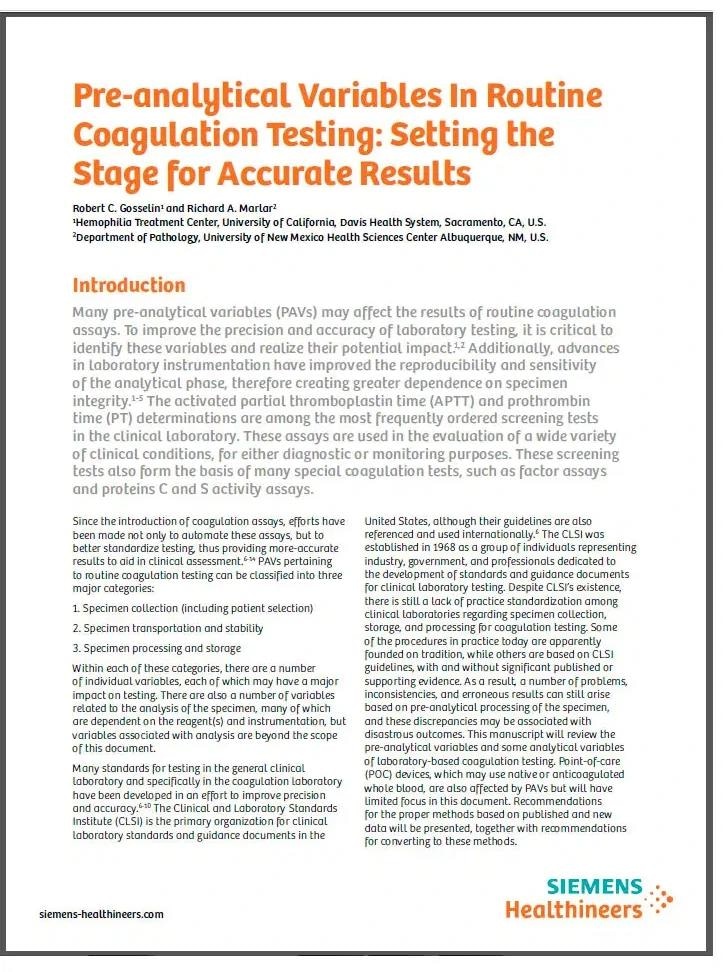
Image Credit: Siemens Healthineers
Take a tour of the system features
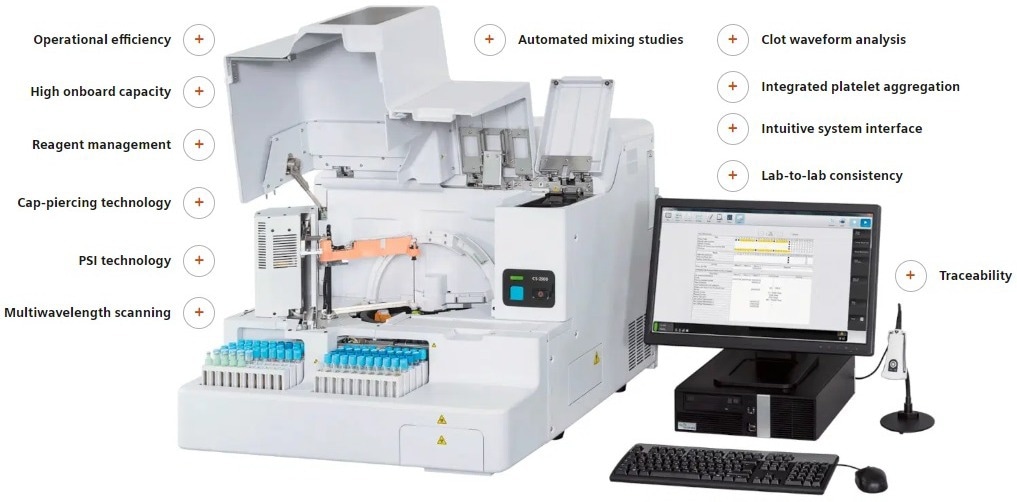
Image Credit: Siemens Healthineers
The Sysmex CS-2500 System delivers sophisticated features and benefits for a simplified workflow and high-quality test results on the first run to mid-volume and multi-site laboratories.
Operational efficiency
A wide selection of assays, various testing techniques, high-tech software, and reduced maintenance will all help to increase operational effectiveness.
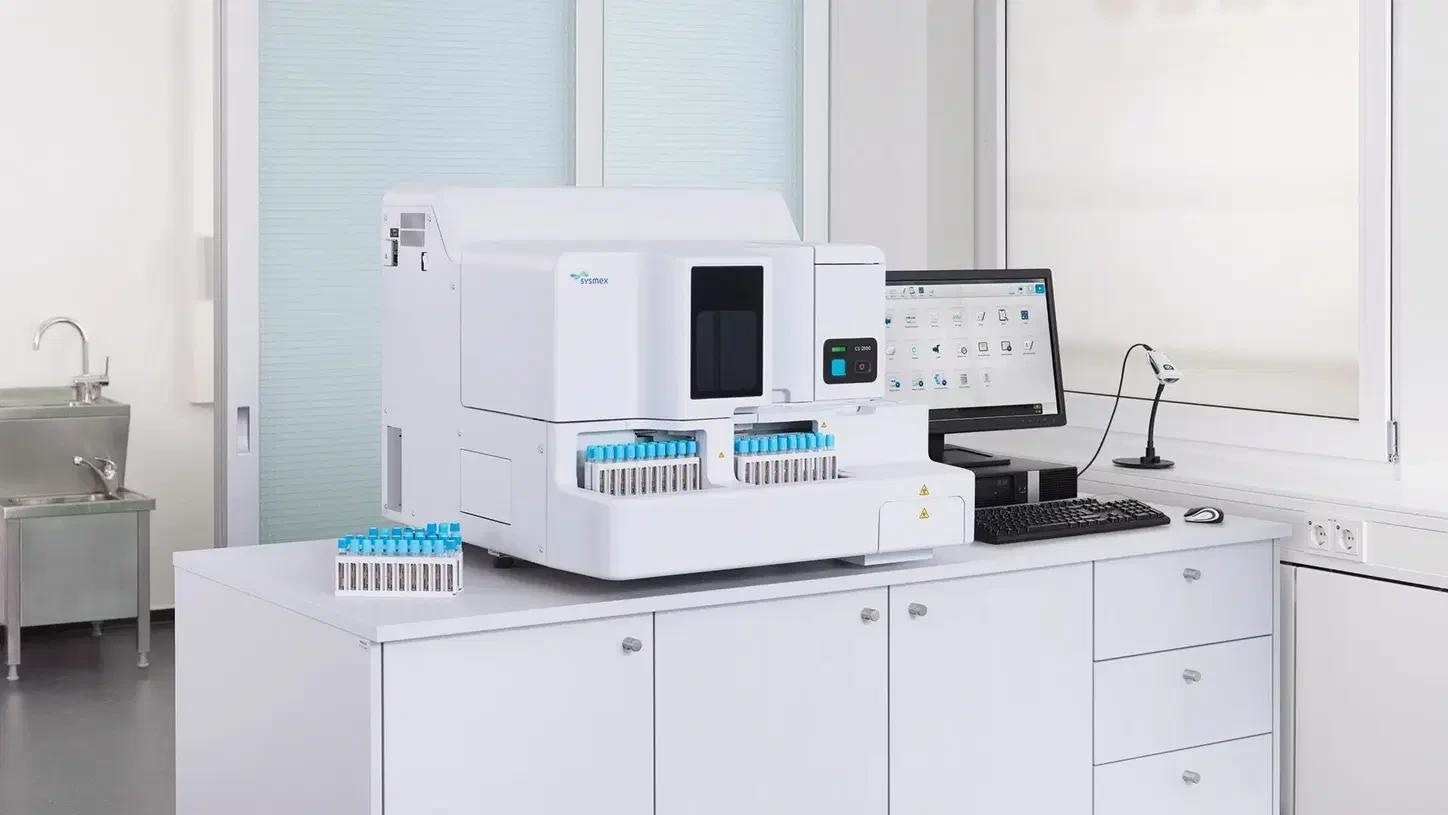
Image Credit: Siemens Healthineers
- Simultaneous processing of standard and micro-mode samples
- Automated QC checks are performed at user-defined intervals, and daily maintenance requires less than five minutes
- Medium test throughput using four measurement principles
- Broad test menu covering a wide range of hemostasis parameters
- Ready-to-use cleaning solution for simplified daily maintenance in just five minutes
- Optical methodology displays clot formation for evaluation of fragile clots
- Multidilution analysis (MDA), automated repeat, redilution, and reflex testing
High onboard capacity

Image Credit: Siemens Healthineers
Extended walkaway duration and strong performance are supported by considerable onboard capacity.
- Onboard reagent capacity of up to 3000 tests, 40 reagents, and five additional buffer positions
- Approximately 180 simultaneous PT/APTT tests per hour
- Multiple lots of the same reagents onboard and flexible vial-type management.
- Continuous access to load up to 500 reaction tubes
- A high-capacity system extends walkaway time and allows professionals to concentrate on value-added activities
Reagent management

Image Credit: Siemens Healthineers
Lab procedures are streamlined by advanced reagent management, continuous loading, and prolonged onboard stability.
- Extended onboard reagent stability promotes cost-effective reagent usage
- The ability to keep reagents aboard is made possible by anti-evaporation caps and a refrigerated reagent chamber to around 10 °C.
- To optimize tests per vial, tilted vials and SLD micro cups lower reagent dead volume
- System automatically recognizes reagent fill volume
- Convenient reagent loading is made possible by an accessible reagent table without interfering with sample measurement
- Constant loading of supplies and samples speeds up the workflow
Cap-piercing technology
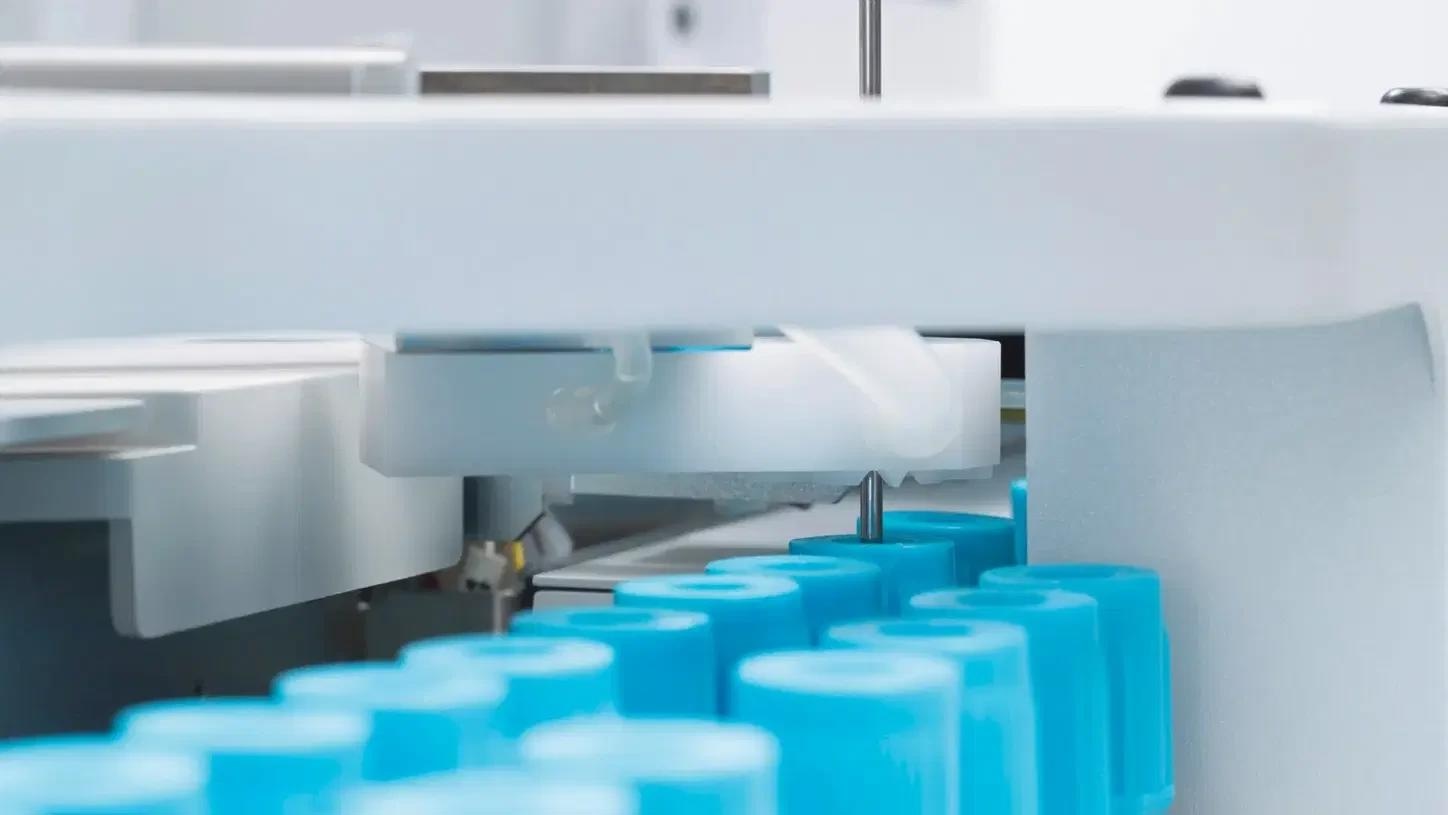
Image Credit: Siemens Healthineers
Cap-piercing technology, which is adaptable and third-generation, allows for consistent throughput for capped and uncapped samples.
- Third-generation cap-piercing technology offers reliable throughput that is constant
- The use of both capped and uncapped sample tubes and cups is permitted by cap-piercing technology
- Secure aliquot technology allows for numerous tests on a single sample without the risk of cap-piercing debris getting into the measurement system
- Customizable processing reduces manual procedures and lengthens walkaway time for both capped and uncapped samples
PSI technology

Image Credit: Siemens Healthineers
Using PSI technology, pre-analytical quality checks guarantee sample integrity.
- On the first run, reliable and precise findings are produced by assay-based, pre-analytical sample-quality checks utilizing PSI technology for HIL interference, sample-volume checks for up to five distinct primary tube types, and clog detection
- To reduce retests and reflex testing, simultaneous multiwavelength scanning detects and handles unsuitable samples
- For a range of test profiles, high-capacity performance is made possible by 10 adaptable reaction detectors
Wavelength scanning
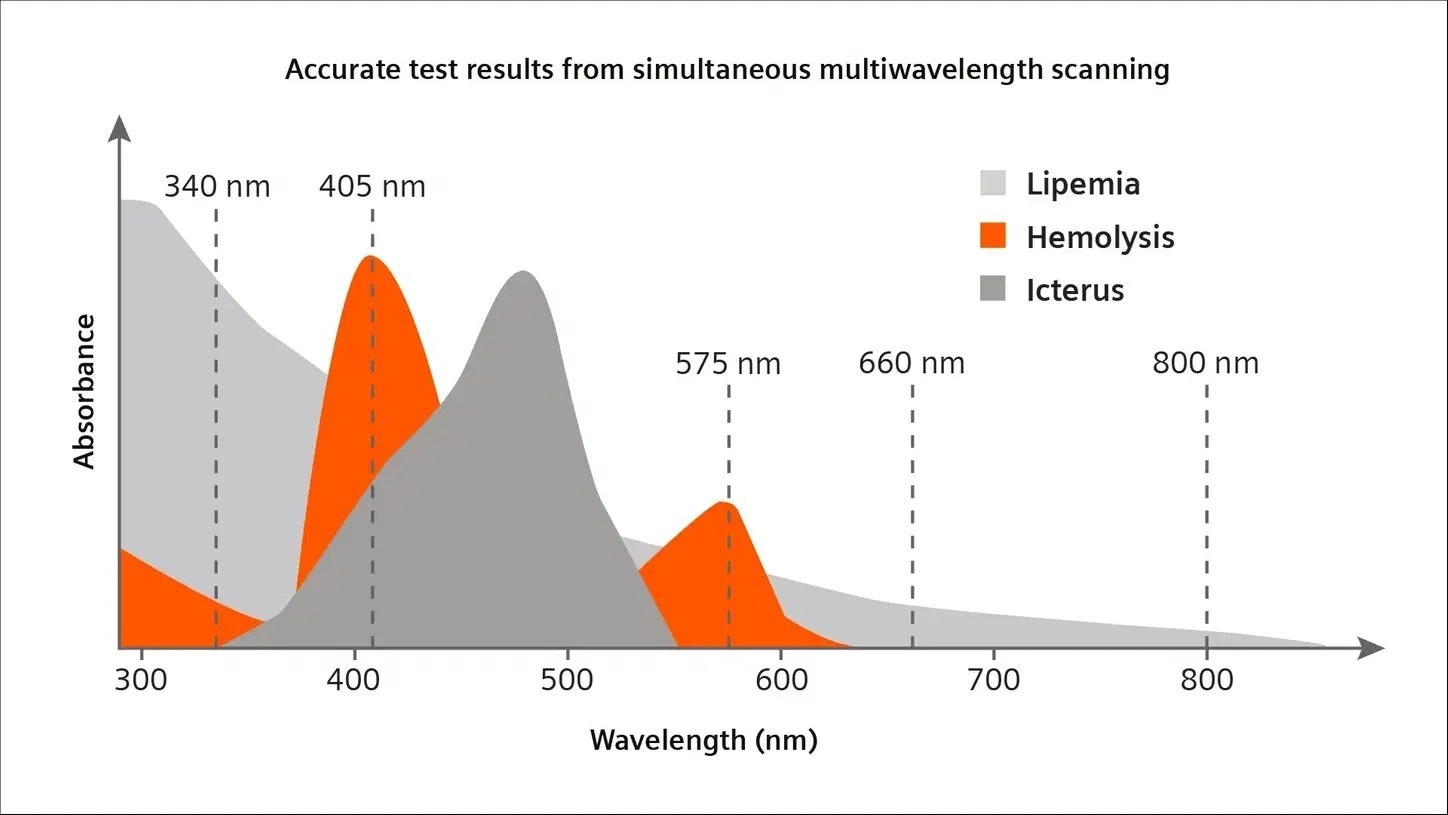
Image Credit: Siemens Healthineers
A simultaneous multiwavelength scan allows for the best wavelength choice.
- All detector channels are concurrently examined for clotting reactions during analysis at 340, 405, 575, 660, and 800 nm
- By automatically choosing the best wavelengths, the system lessens the impact of interfering substances on absorbance spectra
- High-throughput capacity for a range of test profiles is made possible by 10 reaction detectors
Automated mixing studies
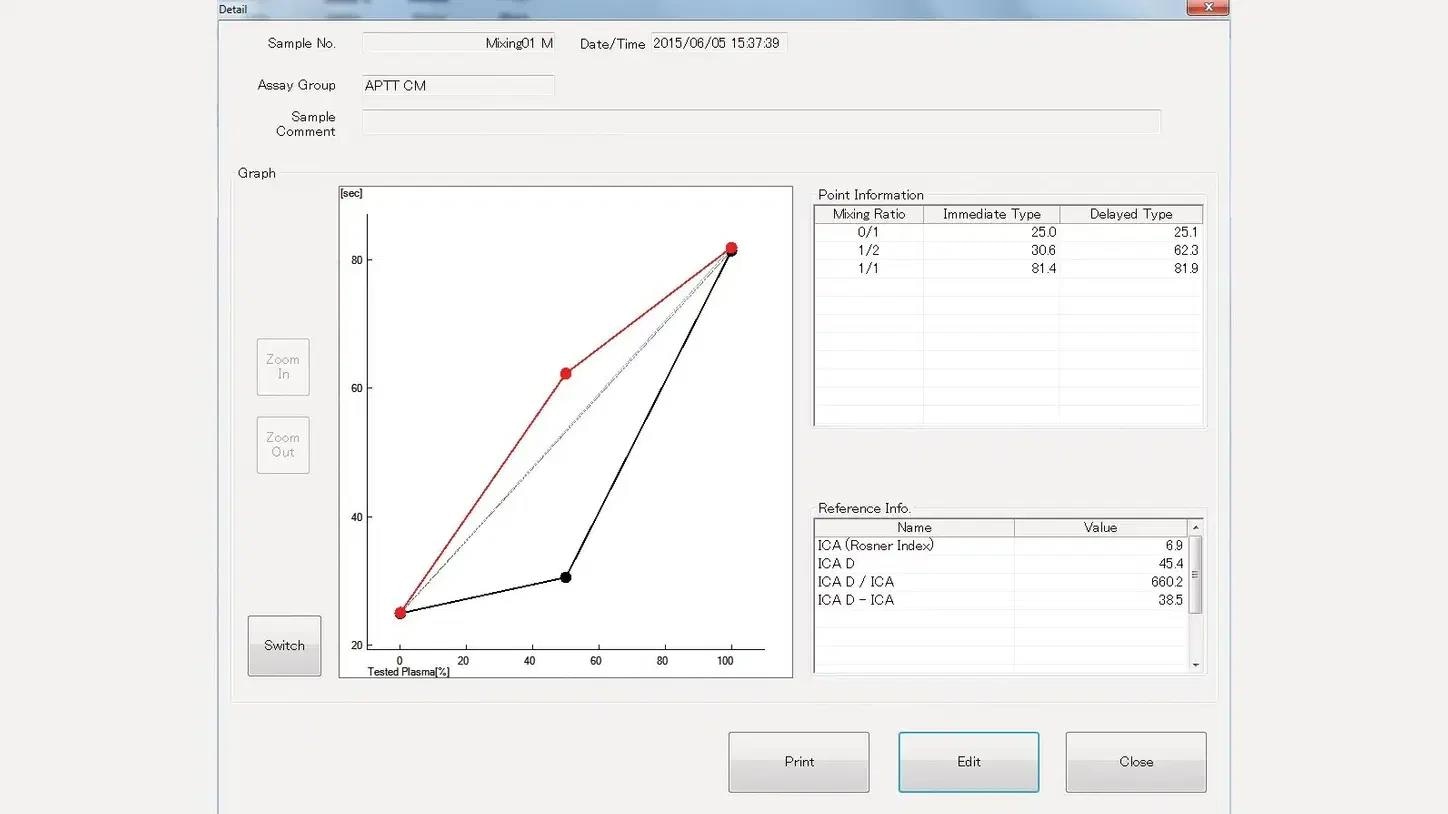
Image Credit: Siemens Healthineers
Automated mixing studies offer a rapid, productive workflow.
- Automated mixing studies employ multi-dilution analysis (MDA)
- Using MDA, clinicians can make conclusions about circulating inhibitor patterns and factor deficits
- Automated dilution of samples with graphical output allows easy analysis
- Processes are made simpler with robust, user-friendly graphical analysis tools
Clot waveform analysis

Image Credit: Siemens Healthineers
Analysis of clot waveforms enables qualitative evaluation of clot waveform patterns.
- Provides sensitive, quantitative waveform patterns and a representation of the optical reaction profile during PT and APTT testing
- Enables more thorough examinations of several underlying clinical conditions, including heparin use, antiphospholipid antibodies (LA), sepsis, and disseminated intravascular coagulation (DIC)
- Using robust, user-friendly graphical analytic tools simplifies operations
Integrated platelet aggregation
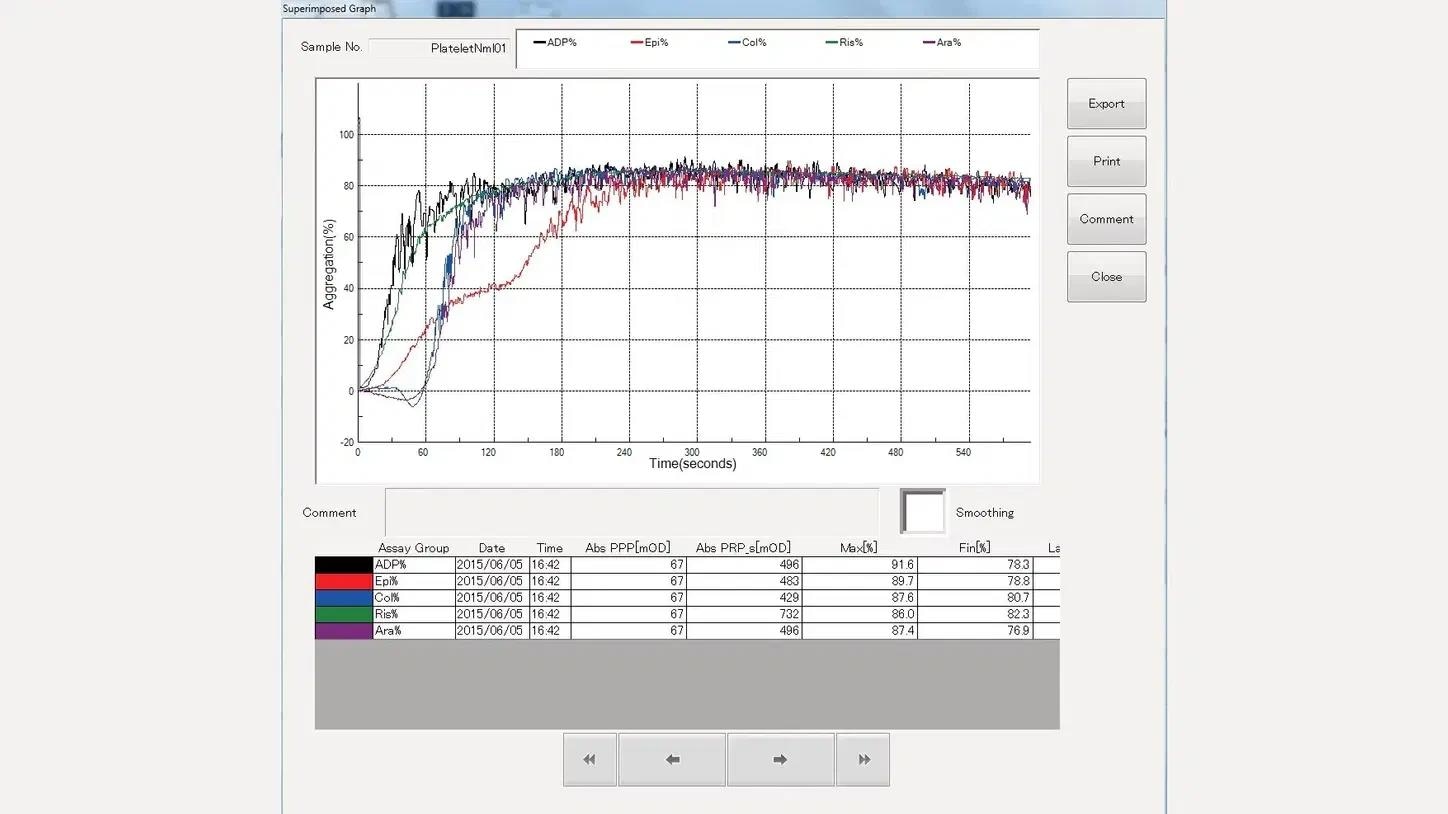
Image Credit: Siemens Healthineers
The number of stages is decreased by integrated platelet aggregation.
- Integrated platelet aggregation enables the identification of inherited, acquired, or drug-induced platelet disorders at a low cost
- A streamlined process that uses fewer instruments and employees with less specialized skills saves a lot of time and resources
- Operations are simplified with powerful, easy-to-use graphical analysis tools
Intuitive system interface
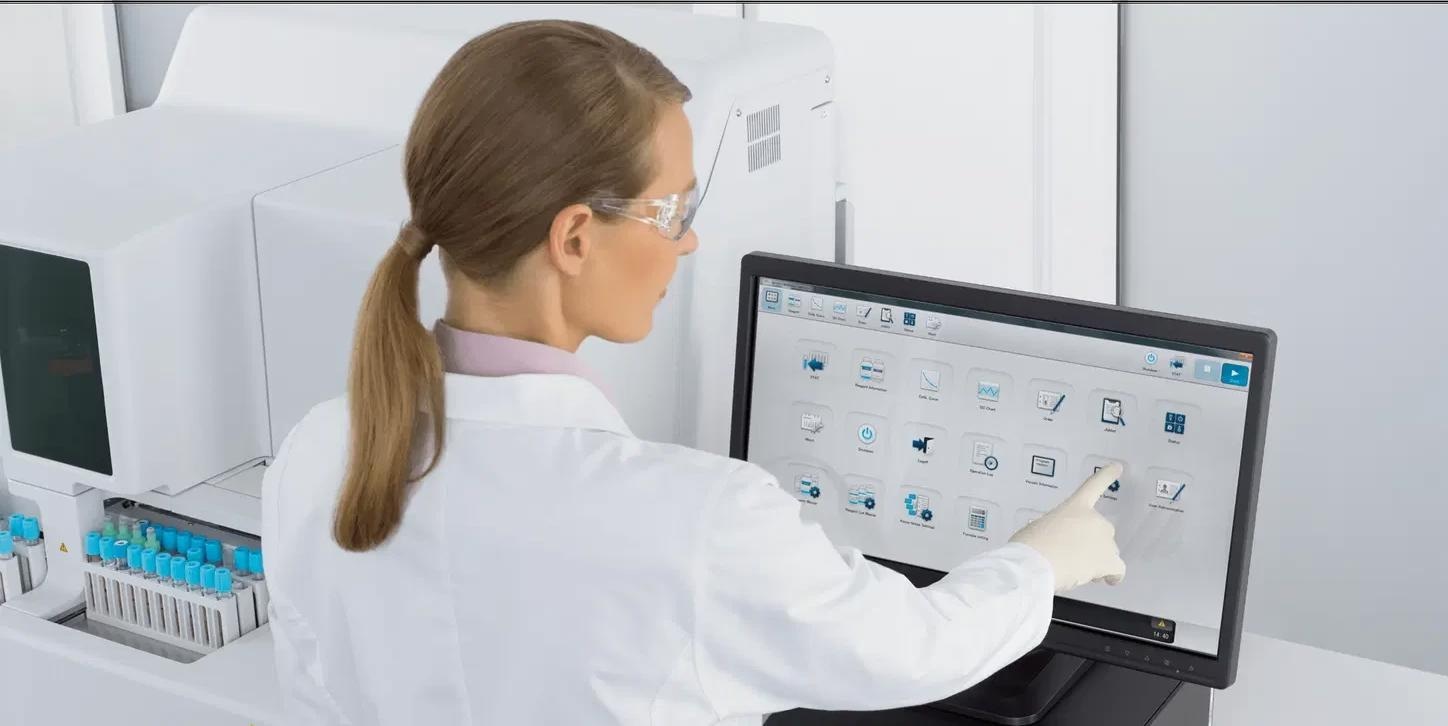
Image Credit: Siemens Healthineers
An intuitive system interface makes lab operations more efficient and productive.
- A 24-inch touchscreen and intuitive software offer a user-friendly interface that is easily customized
- The interface provides access to onboard assistance, customizable maintenance, quality control processes, and real-time reagent and consumables monitoring
- Minimize training and deliver an intuitive user experience from system to system with the family of Sysmex CS systems’ consistent system interface and functionality
Lab-to-lab consistency
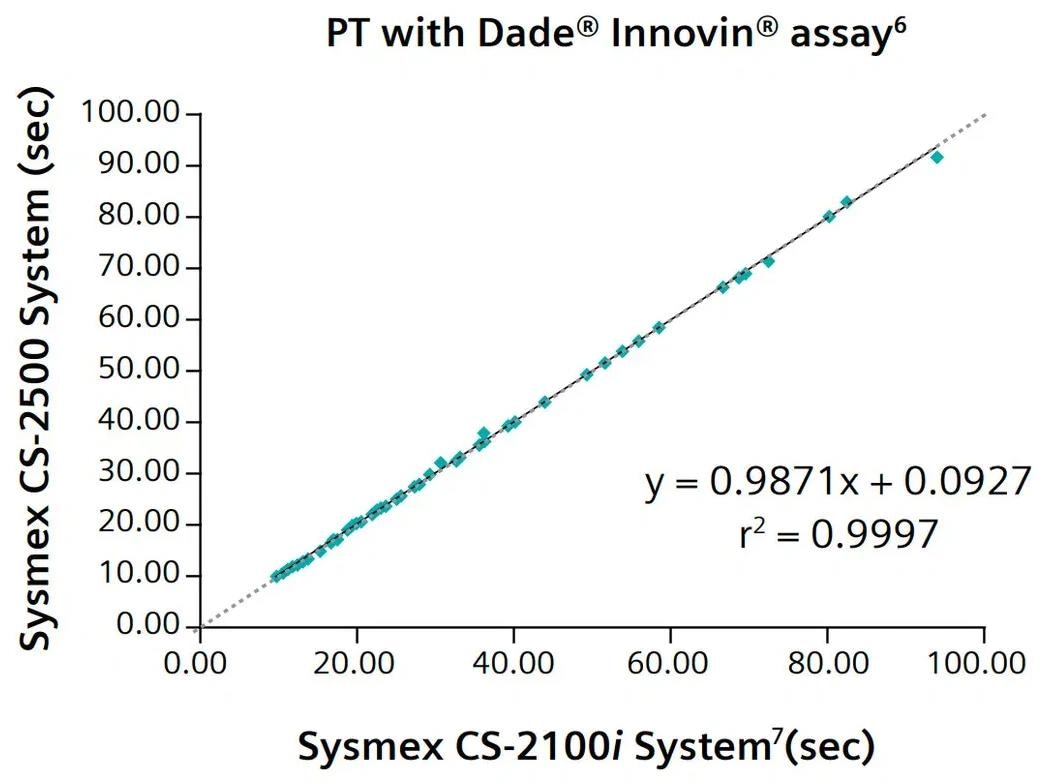
PT with Dade® Innovin® assay. Image Credit: Siemens Healthineers
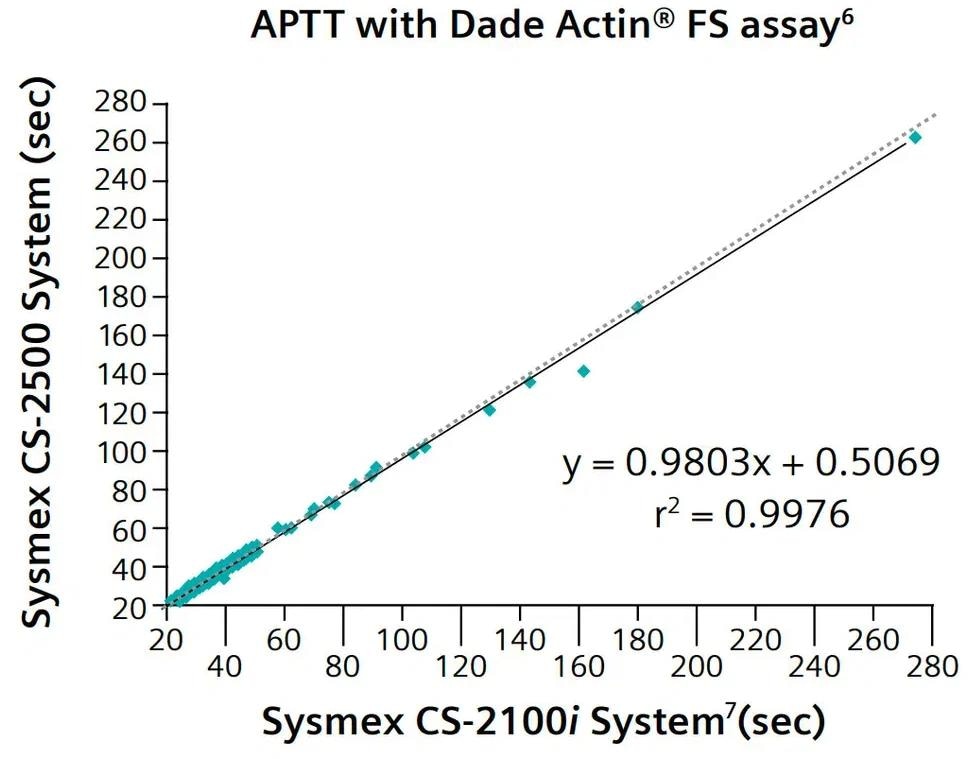
APTT with Dade Actin® FS assay. Image Credit: Siemens Healthineers

D-dimer with INNOVANCE® D-Dimer assay. Image Credit: Siemens Healthineers
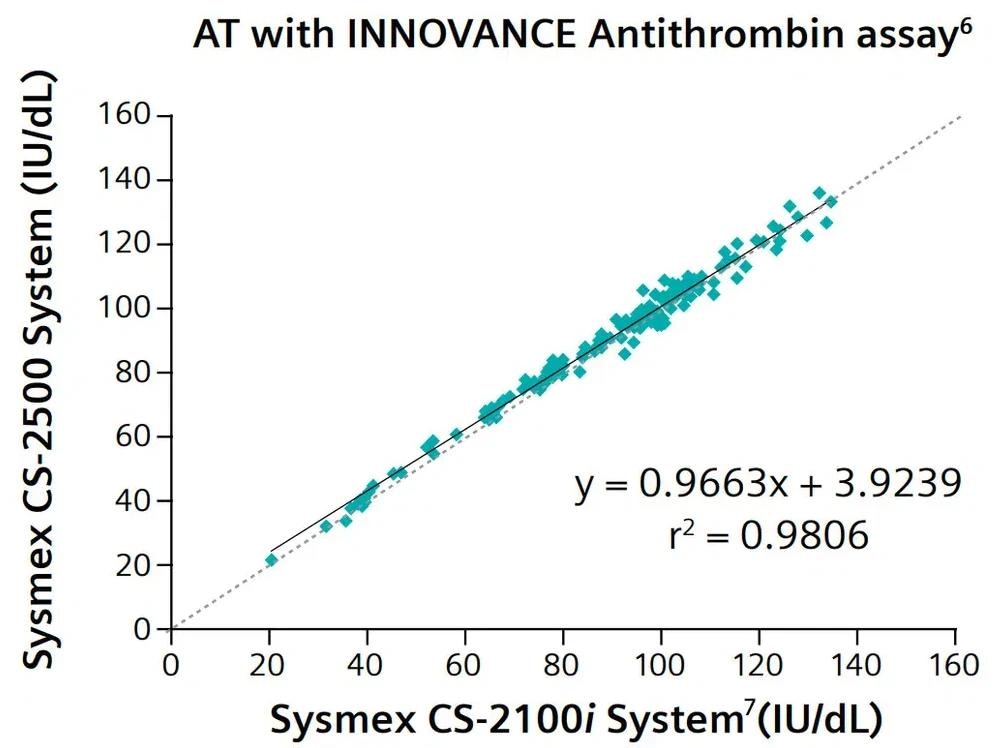
AT with INNOVANCE Antithrombin assay. Image Credit: Siemens Healthineers
Reliable multisite patient monitoring is provided by true lab-to-lab uniformity.
- Results correlate with Sysmex CN-30007, CN-60007, CS-5100, and CA-600 series systems
- Instruments and standard PSI technology are seamlessly integrated to maximize utilization in multisite labs
- Standard software, reagents, controls, and calibrators increase convenience, lower costs, and decrease waste for more effective labor utilization.
- The Atellica® Data Manager facilitates uniform test procedure and result management inside the lab and across lab networks
Traceability
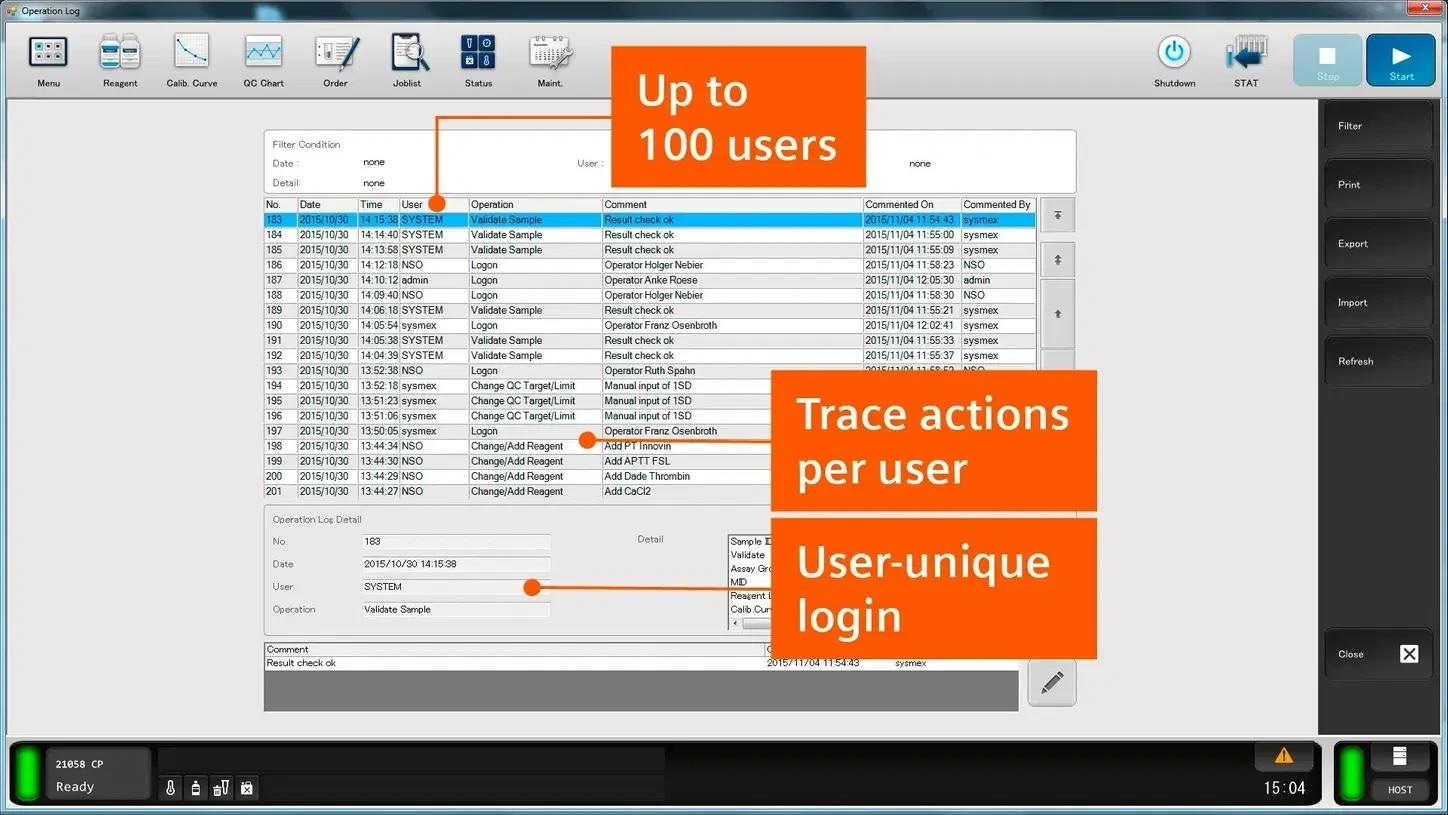
Image Credit: Siemens Healthineers
More clinical insight is provided by fully traceable results and simple audit trails.
- Comprehensive traceability of sample results through easy-to-use audit trials
- Audit trials for up to 60 results per sample for 10,000 samples
- Consists of the following: operator identification, time and date stamps, reagent lot information, reagent table temperatures, test protocol number, dilution ratio, calibration curve information, measurement result information, operation, and error logs, maintenance and QC history, automatic backup, and data storage
Assays
The Sysmex® CS-2500 System delivers a wide range of standard and specialty hemostasis assays (including multiple INNOVANCE® assays), all on a single instrument, enabling laboratories to handle more samples while running more tests per sample.

Our hemostasis assay portfolio ranges from standard PT and APTT testing to a range of specialty tests. Image Credit: Siemens Healthineers
Technical specifications
Source: Siemens Healthineers
| Dimensions |
| Main unit |
Approx. 775 (W) × 895 (D) × 685 (H) mm
30.6 (W) × 35.2 (D) × 27.0 (H) in. |
| Pneumatic unit |
Approx. 280 (W) x 355 (D) x 400 (H) mm
11.1 (W) x 14.1 (D) x 15.7 (H) in. |
| Terminal (PC) |
Approx. 338 (W) x 381 (D) x 100 (H) mm
13.3 (W) x 15.0 (D) x 3.95 (H) in. |
| Terminal (monitor) |
Approx. 556 (W) x 122.5 (D) x 403.5 (H) mm
21.8 (W) x 4.8 (D) x 15.8 (H) in. |
| Measurement channels |
| Method channels |
10 single channels for clotting, chromogenic, immunoassay, and aggregation methods |
| Measurement channels |
10 wells (mixing function using stir bars possible for 4 wells) |
| Principle |
Simultaneous five-wavelength photometry in all detector channels (340, 405, 575, 660, and 800 nm wavelengths) |
| Sample capacity |
| Maximum load |
50 samples; five racks with 10 samples per rack |
| Throughput (tests/hour, approx.) |
| |
Throughput (tests/hour)8 |
PT
APTT |
Approx. 180
Approx. 180 |
PT/APTT
PT/APTT/AT/DD |
Approx. 180 simultaneous
Approx. 95 simultaneous (results for normal-mode processing) |
| Operation |
| Access mode |
Continuous reagent-, consumable-, and sample-loading capability |
| STAT samples |
Five priority positions |
| View calibration |
Graphical display of calibration curves from up to 10 different reagent lots/parameters |
| Auto calibration/auto QC |
User-defined time interval or with new reagent vial |
| Reaction tubes |
| Type |
Single reaction tubes |
| Loading |
Automatic continuous access, 500 reaction tubes onboard |
Optimized digital solutions
Siemens Healthineers provides a comprehensive range of digital solutions that aid in optimizing clinical operations, whether hemostasis is completely integrated or stand-alone.
Atellica Data Manager

Image Credit: Siemens Healthineers
Allows for the standardization of testing procedures and result management across lab networks.
Atellica Process Manager
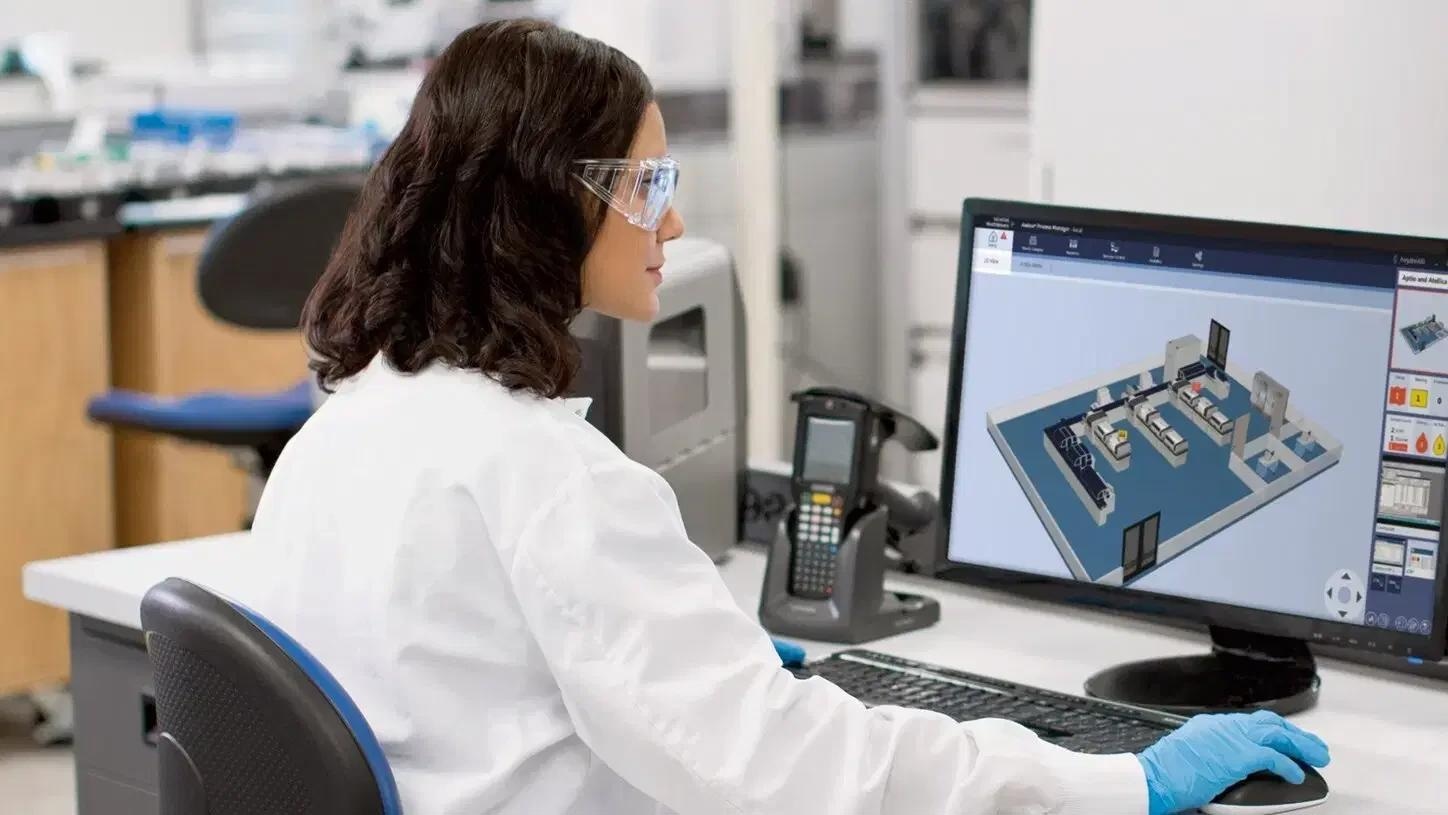
Image Credit: Siemens Healthineers
It helps laboratories use integrated analytics to standardize and improve procedures.
Atellica Inventory Manager
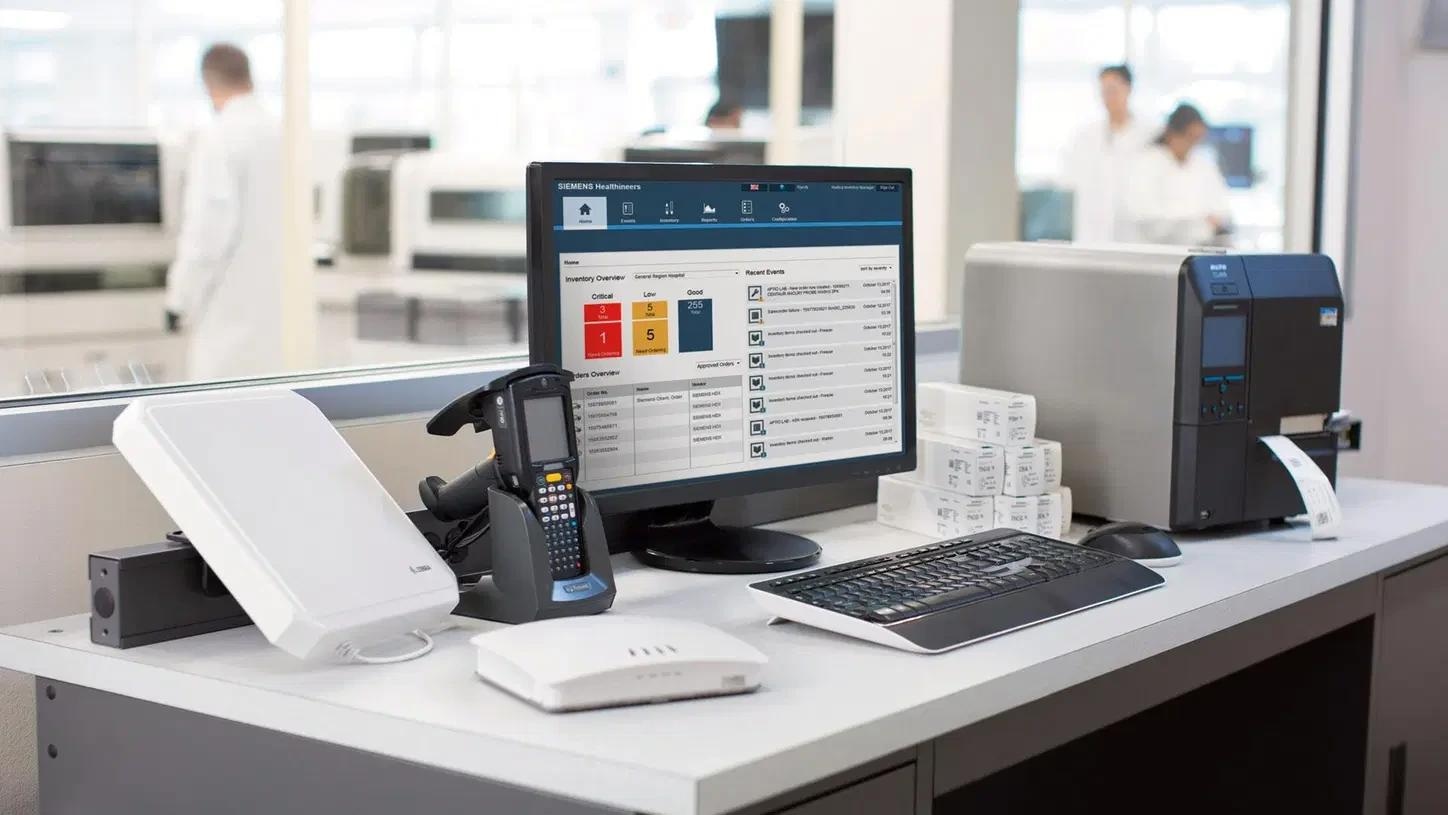
Image Credit: Siemens Healthineers
The Atellica Inventory Manager reduces costs, saves time, and enhances lab quality by automating control of reagents and consumables across numerous sites.